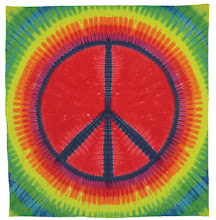Wind Turbine Rotor Experiment
Nilo Goldfarb
This past week in class we have been doing an experiment to see what type of rotor (blades) work the best. We used pre-built windmill base, tower, turbine etc. but we needed to figure out what rotor produced the most energy. We tested the material, the angle, the shape and the number of blades. In the next few paragraphs you will learn about our results, procedures and thoughts on why things happened, how things happened and what things happened. So read on and find out about our amazing quest to find the perfect rotor for our windmill.
Problems in keeping accurate
In this project it was hard to be 100% accurate in finding out which rotors worked best for a variety of reasons. This paragraph will tell you the main ones. One of the problems we faced was keeping the wind turbine an equal distance from the fan throughout our experiments. But the biggest problem that every group faced was humanness. We are all human and when we put blades into a windmill each time of course they will not all be put in exactly the same way as the last time so the results will vary. I would say overall our results were probably about 70% accurate in figuring out which rotors worked best. Even though they are not exactly accurate they will later be compared with other groups results to be made more accurate.
These are the types of variables in wind turbine blades and why I think different ones worked better than others:
Shape:
Square blade: 0.12 did not work well probably because its shape could not catch the air to move fast.
Rounded blade 0.15 v did mediocre because it did not have the best shape for catching air but its shape was ok and went medium fast but was definitely not the best.
Notched blade 0.18v the best shape for catching wind but must be improved by varying shape, size, material and angle.
Angle:
0 degrees 0.21 this one did well because it caught wind and mad the blades spin pretty fast.
45 degrees 0.13-0.18 this one did ok but had a little bit to much of an angle but still did ok
90 degrees 0.4 did terrible had far too much angle.
Material of blades:
Wood blades 0.46 did very well. The material was easy for the wind to move.
Styrofoam blades 0.38 also did very well. The material was easy for the wind to move.
Linoleum blades 0.71 were perfect completely. The material was super easy for the wind to move.
Plastic blades 0.38 did well just like wood or styrofoam but does not come close to linoleum.
Number of blades:
6 blades 0.16 ok.
3 blades 0.20 good nice speed
2 blades 0.16 ok
Length of blades:
Long blades 0.18 bad speed
Short blades 0.40 great speed one of the perfect sizes
Medium blades 0.40 great speed the other perfect size
In conclusion I have learned that when we build the perfect mini windmill Rotor it will be made of linoleum, it will have medium-sized blades, it will be notched in shape, it will have three blades and have 0 degrees in angle. Now I know what my windmill will be like.
Subscribe to:
Post Comments (Atom)




No comments:
Post a Comment